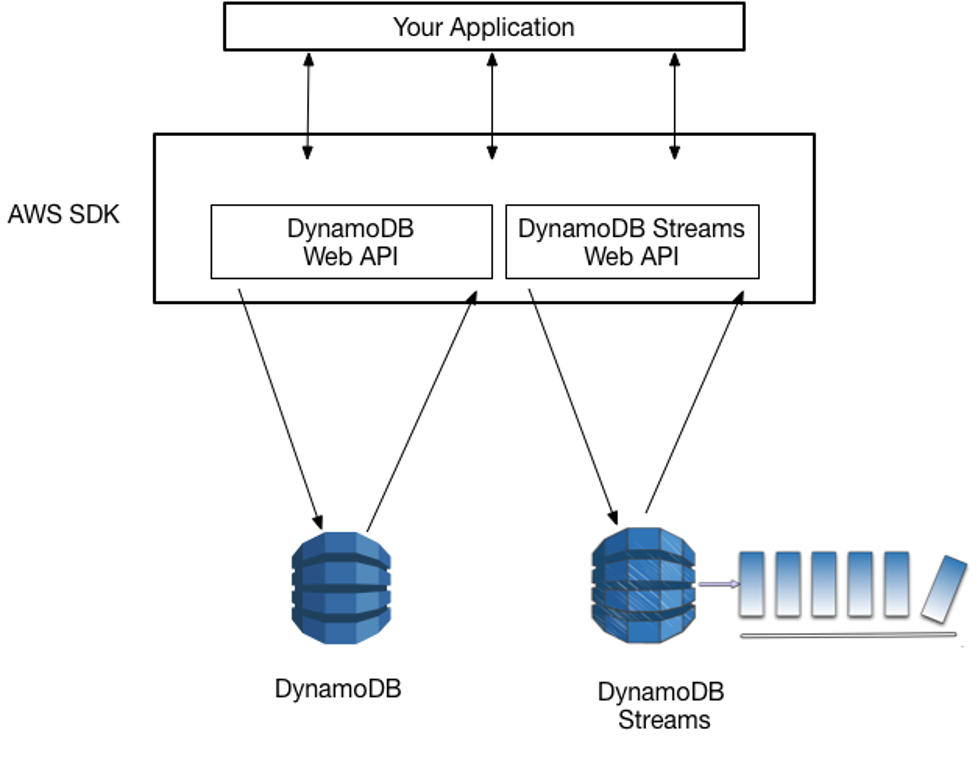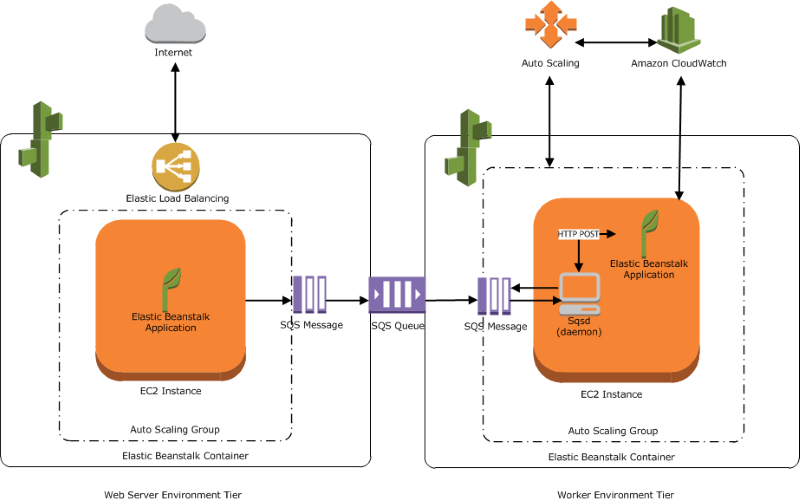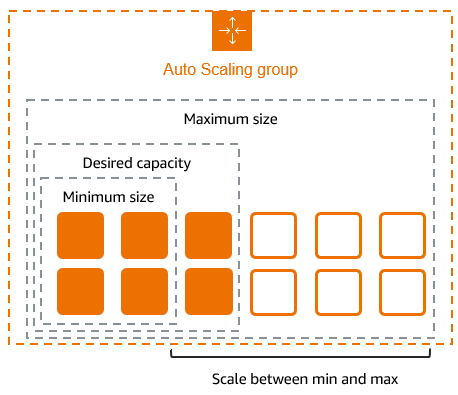Welcome to Your Linux Adventure
In today's technology-driven world, Linux has evolved from a hobbyist's operating system to an essential skill for IT professionals. Whether you're launching a career in DevOps, cybersecurity, cloud computing, or system administration, Linux expertise has become non-negotiable.
At DevOps Horizon, we're excited to introduce our comprehensive "Linux Zero to Hero" series, where we'll guide you through everything you need to know about Ubuntu Linux—from the absolute basics to advanced system administration techniques. No prior experience required!
Why Ubuntu Linux?
You might be wondering: "Why should I learn Linux, and why Ubuntu specifically?" Great questions!
Linux powers approximately 96.3% of the world's top one million web servers, 85% of smartphones (Android is built on Linux), and 100% of the top 500 supercomputers. It's the backbone of cloud infrastructure, IoT devices, and much more. Put simply, Linux is everywhere.
As for Ubuntu, we've chosen it as our focus for several compelling reasons:
- User-friendly: Ubuntu offers one of the most approachable Linux experiences for beginners
- Widespread adoption: It's among the most popular Linux distributions in enterprise environments
- Vast community support: A massive online community means solutions to common problems are readily available
- Regular updates: Canonical (Ubuntu's parent company) provides consistent updates and long-term support versions
- Excellent documentation: Comprehensive official documentation makes learning easier
Who This Series Is For
Our Linux Zero to Hero series is designed for:
- Complete beginners with no prior Linux experience
- Windows or Mac users looking to expand their OS knowledge
- IT students preparing for entry-level positions
- Career changers targeting DevOps, cloud, or system administration roles
- Curious tech enthusiasts who want to understand what's "under the hood"
No matter your background, if you can follow instructions and have a desire to learn, this series will take you from complete novice to confident Linux user.
Your Ubuntu Learning Roadmap
Learning Linux is a journey, and we've mapped out a clear path to take you from zero to hero. Here's what you can expect in our upcoming series:
Foundation Phase (Beginners)
- Getting Started with Ubuntu: Installation, desktop environment basics
- Terminal Essentials: Introduction to the command line interface
- File System Navigation: Understanding directories and basic file operations
- Text Editing in Linux: Using nano, vim, and other text editors
- User Management: Creating accounts, groups, and permissions
Building Skills Phase (Beginners to Intermediate)
- Package Management: Using apt to install, update and manage software
- Process Management: Monitoring and controlling system processes
- Basic Shell Scripting: Automating tasks with bash scripts
- Network Configuration: Setting up and troubleshooting connections
- System Monitoring: Tools for checking system health and performance
Advanced Topics Phase (Intermediate)
- Security Fundamentals: Hardening your Ubuntu system
- Advanced File Operations: Finding, archiving, and manipulating files
- Service Management: Working with systemd and service configuration
- Disk Management: Partitioning, formatting, and mounting storage
- Scheduled Tasks: Using cron jobs and timers
Mastery Phase (Intermediate to Advanced)
- Virtualization in Ubuntu: Working with VMs and containers
- Remote Administration: SSH configuration and remote management
- Troubleshooting Skills: Solving common Linux problems
- Advanced Shell Scripting: Creating powerful automation tools
- Building a Personal Linux Server Project: Putting it all together
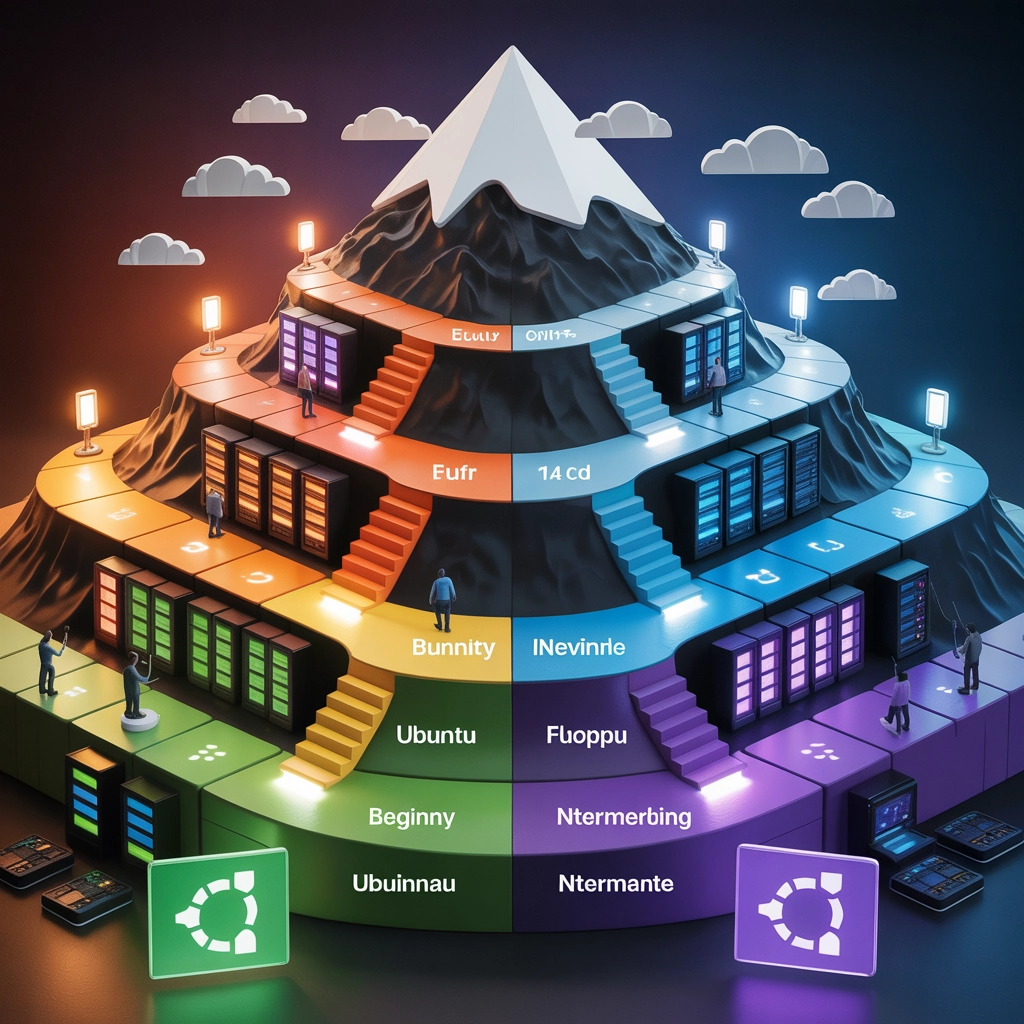
Getting Started: Your First Steps with Ubuntu
Before we dive into detailed tutorials in the upcoming posts, let's ensure you're ready to begin your Linux journey.
Installation Options
You have several ways to get started with Ubuntu:
- Dual-boot setup: Install Ubuntu alongside your existing operating system
- Virtual machine: Run Ubuntu in a virtual environment using tools like VirtualBox or VMware
- Live USB: Boot Ubuntu from a USB drive without installing it
- WSL (Windows Subsystem for Linux): Run Ubuntu directly within Windows 10/11
- Cloud instance: Deploy an Ubuntu server in the cloud (AWS, Azure, GCP)
For beginners, we recommend options 2 or 3 as they're the least disruptive to your current setup.
Minimum System Requirements
Ubuntu 22.04 LTS (the version we'll use throughout this series) requires:
- 2 GHz dual-core processor
- 4 GB RAM (system memory)
- 25 GB of free hard drive space
- Internet access is helpful
- Either a DVD drive or a USB port for the installer media
Most computers from the last decade will handle Ubuntu comfortably.
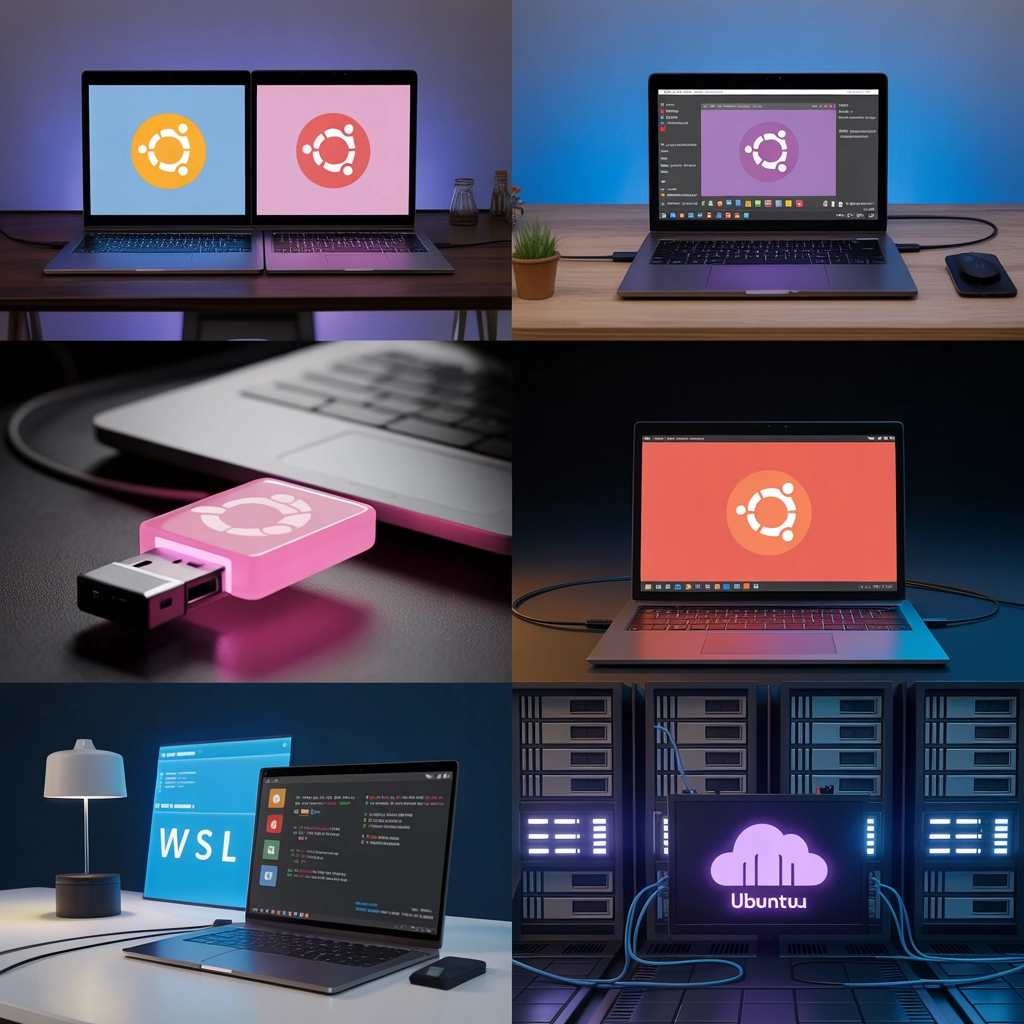
What to Expect in Our First Tutorial
In the first installment of our series, we'll cover:
- Detailed Ubuntu installation instructions (with screenshots)
- First boot and initial setup
- Navigating the GNOME desktop environment
- Essential system settings you should configure
- How to get help when you need it
We'll ensure that by the end of the first tutorial, you'll have a functioning Ubuntu system ready for the learning journey ahead.
Why Learning Linux Will Transform Your Tech Career
Before we wrap up this introduction, let's discuss why investing time in Linux skills is a career game-changer:
-
In-demand expertise: According to the 2023 Open Source Jobs Report, 93% of hiring managers report difficulty finding sufficient Linux talent.
-
Salary premium: Linux professionals earn 10-20% more than their Windows-only counterparts in comparable roles.
-
Career versatility: Linux skills transfer across multiple IT domains, from system administration to DevOps, cloud computing, cybersecurity, and data science.
-
Future-proof skills: The fundamentals of Linux have remained consistent for decades, making it a stable skill set that doesn't quickly become obsolete.
-
Community membership: Joining the Linux community connects you with millions of professionals and enthusiasts worldwide.

Learning Effectively: Our Approach
Throughout this series, we'll follow these principles to ensure your success:
- Hands-on practice: Each tutorial will include exercises for you to complete
- Progressive complexity: Concepts will build on previous lessons
- Real-world examples: We'll focus on practical applications, not just theory
- Troubleshooting guidance: You'll learn how to solve common problems
- Clear explanations: Technical concepts will be explained in accessible language
We recommend setting aside 3-5 hours per week to read our tutorials and practice the commands. Consistency is more important than marathon sessions—regular practice will help cement your knowledge.
Resources to Complement Your Learning
While our series aims to be comprehensive, here are some additional resources that will support your Linux learning journey:
- Official Ubuntu Documentation: https://help.ubuntu.com/
- The Linux Command Line by William Shotts (free online book)
- Linux Journey: An interactive online learning platform
- Ask Ubuntu: Q&A community for Ubuntu users
- Ubuntu Forums: Discussion boards for all Ubuntu-related topics
Join Us on This Linux Adventure!
We're thrilled to guide you on this Linux Zero to Hero journey. The road from complete beginner to Linux professional isn't always straightforward, but with persistence and the right guidance, you'll develop skills that will serve you throughout your IT career.
In our next post, we'll dive into Ubuntu installation and desktop basics. Make sure you're subscribed to DevOps Horizon to receive notifications when new tutorials are published.
Have questions about the series or specific topics you'd like us to cover? Drop them in the comments below or contact us directly.
Are you ready to begin your transformation from Linux zero to hero? The journey starts now!
This post is the introduction to our comprehensive "Linux Zero to Hero" series. Check back next week for the first tutorial on Ubuntu installation and desktop basics.


